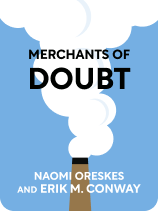

This article is an excerpt from the Shortform book guide to "Merchants of Doubt" by Naomi Oreskes and Erik M. Conway. Shortform has the world's best summaries and analyses of books you should be reading.
Like this article? Sign up for a free trial here .
Do you understand how science works? Does it operate on proof or consensus? How does it handle uncertainty?
Science impacts all of us, so we would do well to understand how science works. It’s helpful to know the basics of the peer review process, how the scientific community deals with uncertainty, and what scientists mean when they use the word “cause.”
Read more to learn the basics of how science works.
How Science Works
Most of us don’t really understand what science is or how science works. We think it’s iron-clad proof that something is true. In reality, scientific knowledge is expert consensus—a group of qualified scientists agrees that a claim is correct when there’s enough evidence to support it.
The Peer Review Process
Expert consensus comes from peer review. No science is considered legitimate until it passes peer review. The peer review process is a key element of how science works. Typically, the process works like this:
Step #1: A scientist comes up with an idea, collects evidence to support it, writes a paper, and then submits it to a scientific journal for publication.
Step #2: The journal sends the paper to three other scientists to review. Reviewers must be subject matter experts and mustn’t have a close relationship with the paper’s author. They look for bad science and mistakes and provide comments. If the reviewers provide conflicting comments, the journal might send the paper to more scientists or the editor might provide notes.
Step #3: The journal sends the reviewers’ notes back to the paper’s author to address. The author may write multiple drafts as she implements and receives new feedback. If the author ultimately fails to revise well enough, the journal won’t publish the paper. The author has to start over or try a different (less prestigious) journal.
How Science Deals With Uncertainty
How the scientific community deals with uncertainty is a critical aspect of how science works. Even after a paper has passed peer review and been published, there will always be some uncertainty regarding the details—science is always evolving, so while we may know a lot, we’re never going to know everything about any topic. This is normal and important—it’s what drives scientists to keep discovering new things.
- For example, climate modelers can’t effectively capture hurricanes because they’re too small (on a global scale).
When presented with an uncertainty, the question shouldn’t be whether there’s any doubt, but whether there’s any reasonable doubt. If there’s reasonable doubt, the matter isn’t settled. If there’s doubt on the details, that’s normal.
Science has gotten a lot done even though it was never designed to provide certainty—for example, we landed astronauts on the moon. Feats like this don’t prove that science is perfectly, objectively right, but they do suggest that when we act on the work of expert consensus, we can get a lot done.
What Scientists Mean by “Cause”
Like science and scientific uncertainty, many of us don’t understand how cause works. Knowing what scientists mean when they use the word “cause” is important to understand how science works. For example, we think that if smoking causes cancer, then if a person smokes, she’ll definitely get cancer.
In reality, it’s more complicated than that. There are two types of causes:
- Statistical. This means that if you do something, you’re more likely to see a particular outcome. (If you smoke, you’re more likely to get cancer.)
- Everyday. This means that once a particular result has come to pass, you can find the cause, but the cause isn’t guaranteed to create that particular outcome every time. (Shortform example: If you fight with your partner because you’re jealous, jealousy caused that particular fight. Jealousy often, but not always, causes fights.)
Now you know the basics of how science works.

———End of Preview———
Like what you just read? Read the rest of the world's best book summary and analysis of Naomi Oreskes and Erik M. Conway's "Merchants of Doubt" at Shortform .
Here's what you'll find in our full Merchants of Doubt summary :
- How doubt-mongering techniques are used to discredit those who threaten a person or company's agenda
- The 10 most common doubt-mongering techniques
- Steps you can take to protect yourself from doubt-mongering






